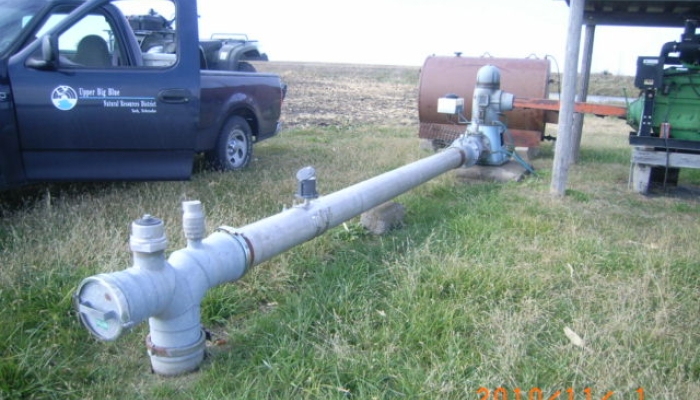2019 Hastings Vadose Zone Nitrate Study (Summary)
By Dr. Dan Snow, research professor with the Nebraska Water Center
Key Takeaways
The most recent study compared 5-year changes between 2011 and 2016 in stored nitrate under the same fields sampled during the first study and estimated the differences under specific land uses. Some cropland sites showed increases in vadose nitrate while others showed a reduction, though overall the average amount of vadose zone nitrate beneath irrigated cropland increased by about 30% in the top 60 feet of the profile. This means nitrogen fertilizer continues to be lost below the root zone despite changing managing practices. The largest amount of nitrate was measured beneath furrow irrigated cropland. Nitrate beneath fields that changed from furrow to water-conserving sprinkler irrigation tend to have lower vadose zone nitrate and supports the idea that reducing agricultural water use also reduces nitrate leaching.
The study found significant differences between ammonia and uranium concentrations by irrigation method, and that almost two-thirds of vadose zone inorganic nitrogen was in the form of ammonia. Ammonia may be leached directly from the surface or derived from leached nitrate. Nitrate isotope testing in the vadose zone and groundwater suggest that livestock manure may contribute to nitrate loading under some areas, though the major source is commercial fertilizer nitrogen. Groundwater age-dating, and simulation of nitrification and recharge, suggests that water and nitrate production and movement through the vadose zone in the Hastings area occurs in less than 20 to 30 years.
Slowing the buildup of nitrate in the vadose zone and in Hasting groundwater will require long term cooperative efforts between producers and natural resources districts to reduce water and nitrogen losses from fertilized crops.
Cooperation is even more critical now as other drinking water contaminants such as uranium found in the Hastings area groundwater may also be linked to irrigation water and fertilizer use.
For more on this topic, read the full study or view the slides from Snow’s presentation.
Key Takeaways
- Nitrate concentrations beneath irrigated cropland increased by about 30% between 2011 and 2016 indicating that nitrogen fertilizer continues to be lost below the root zone
- The largest amount of nitrate was measured beneath furrow irrigated cropland.
- Fields changing from furrow to sprinkler irrigation reduced nitrate loss.
- Nitrate moves from surface to groundwater in the Hastings area in less than 20 to 30 years.
The most recent study compared 5-year changes between 2011 and 2016 in stored nitrate under the same fields sampled during the first study and estimated the differences under specific land uses. Some cropland sites showed increases in vadose nitrate while others showed a reduction, though overall the average amount of vadose zone nitrate beneath irrigated cropland increased by about 30% in the top 60 feet of the profile. This means nitrogen fertilizer continues to be lost below the root zone despite changing managing practices. The largest amount of nitrate was measured beneath furrow irrigated cropland. Nitrate beneath fields that changed from furrow to water-conserving sprinkler irrigation tend to have lower vadose zone nitrate and supports the idea that reducing agricultural water use also reduces nitrate leaching.
The study found significant differences between ammonia and uranium concentrations by irrigation method, and that almost two-thirds of vadose zone inorganic nitrogen was in the form of ammonia. Ammonia may be leached directly from the surface or derived from leached nitrate. Nitrate isotope testing in the vadose zone and groundwater suggest that livestock manure may contribute to nitrate loading under some areas, though the major source is commercial fertilizer nitrogen. Groundwater age-dating, and simulation of nitrification and recharge, suggests that water and nitrate production and movement through the vadose zone in the Hastings area occurs in less than 20 to 30 years.
Slowing the buildup of nitrate in the vadose zone and in Hasting groundwater will require long term cooperative efforts between producers and natural resources districts to reduce water and nitrogen losses from fertilized crops.
Cooperation is even more critical now as other drinking water contaminants such as uranium found in the Hastings area groundwater may also be linked to irrigation water and fertilizer use.
For more on this topic, read the full study or view the slides from Snow’s presentation.


